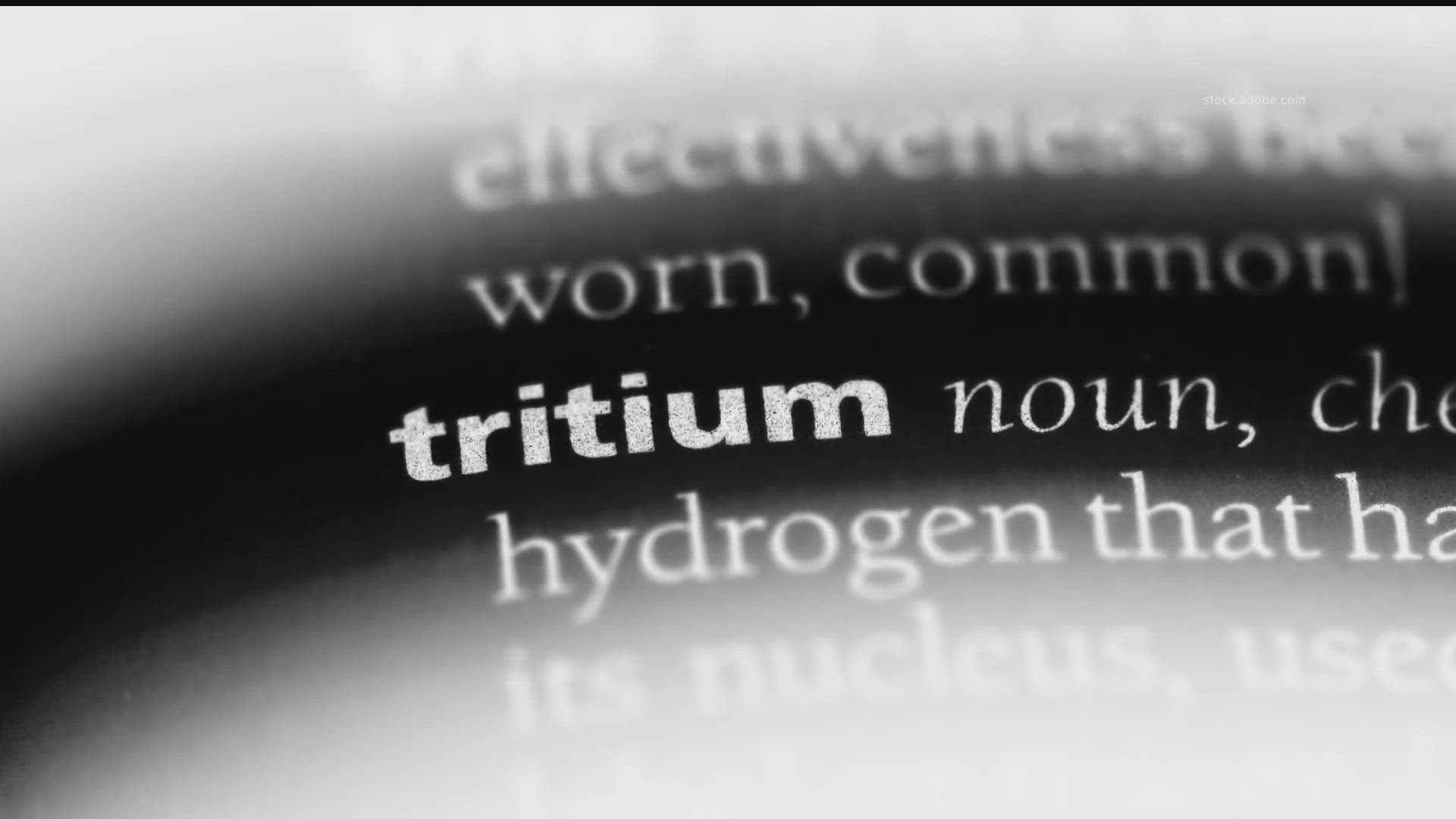MONTICELLO, Minn. — To understand tritium, remember the first element on the periodic table – hydrogen.
Dr. Kathryn Higley says tritium is a radioactive version of hydrogen behaving chemically just as hydrogen does and going wherever hydrogen goes. She's a professor in the School of Nuclear Science and Engineering at Oregon State University and interim director for the Center for Quantitative Life Sciences.
"So typically [tritium] gets attached to water," Higley explained. "Over the years, they've sort of moved away from a lot of use of some of these radioactive materials but things like some of the 'exit' signs, some lights on airfields, runway lights for example, where you absolutely need to have the thing illuminated."
Meanwhile, the Minnesota Department of Health defines tritium as "a naturally occurring radioactive form of hydrogen (low-energy beta particle) that is produced in the atmosphere. It is also a byproduct of producing electricity from nuclear power plants. Beta particles do not travel far in the air and are too weak to penetrate the skin. Therefore, it is not an external radiation dose concern, but breathing in tritium or swallowing contaminated water are possible ways to be exposed."
Xcel Energy's regional president says the latest leakage of tritium into groundwater at the Monticello nuclear-generating plant is fully contained and has not been detected in any local drinking water.
"When events like this happen, there are a lot of eyeballs that are suddenly going to be looking at what's taking place," Higley said.
"You have some very rigorous regulatory agencies that are all looking at this from the state, from the national level," added University of Minnesota Duluth associate dean Brian Hinderliter, who specializes in mechanical and nuclear engineering, "and if there was a concern for the health and safety of anyone, they would be involved and it would be clear. They would have all sorts of regulations about what you can and can't drink."
"And to be honest, there is tritium as a naturally occurring element in the water anyway," Hinderliter continued. "It's produced in the upper atmosphere very much like carbon 14 is produced in the upper atmosphere."
The Minnesota Department of Health reports the EPA Safe Drinking Water Act limit for tritium in drinking water is 4 millirems per year, which equates to a concentration of 20,000 picocuries per liter.
"This provides minimal risk of health impacts for people from drinking water," its website reads. "Picocuries are often the units used to describe environmental levels of radioactivity."
Watch more local news:
Watch the latest local news from the Twin Cities in our YouTube playlist:

